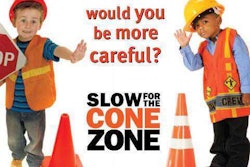
It’s hard to see a time in the foreseeable future where we will have a solid supply of funding from any single source to fill the Highway Trust Fund (HTF).
That’s an asterisked statement of course because an increased gas tax could do it.
But that won’t happen in the foreseeable future. And neither will any other single form of funding become the savior of the HTF.
As long as that situation exists, looking for private money to spend on roads becomes an essential exercise. To some extent, the odds of it happening and happening effectively are secondary–it is an option and as such has to be, as the big guys on the House Transportation and Infrastructure Committee are fond of saying of any possible funding option, “on the table.”
A piece from the American Enterprise Institute argues: “The record shows that such partnerships are more likely to be built on time and on budget, and that they offer greater value than conventional infrastructure projects.”
I’m not sure that this isn’t a fairly grand oversimplification, but nevertheless, the article does elaborate a number of arguments that should be kept front and center as we approach reauthorization.
I was in Washington, D.C., last week and I heard from some very powerful politicians in transportation infrastructure. All mentioned they had some ideas in the works that would boost HTF funding. Not one of them detailed those ideas. That’s a come on we’ve heard for more than five years now–and still no detailed proposal to fill the HTF with a “new” source of funding.
Even read with a somewhat wary eye, the piece does seem to provide some basic arguments, the building blocks of the pro-PPP people. These points need elaborating and examining, but to ignore the potential of private funding at a time like this is folly at best, an unprintable word at worst.
Take a look. And keep the Institute’s arguments in mind because it’s a more than reasonable bet that the surface transportation legislation that follows MAP-21–which expires September 2014–will be (like Map-21 itself) woefully short of adequate funding, and the more years we work with less than the funding we need the more our transportation infrastructure deteriorates at well beyond a reasonable rate. Arguably the next reauthorization bill is exponentially more important that MAP-21.
There will be cases in various parts of the country where a PPP may be the difference.














